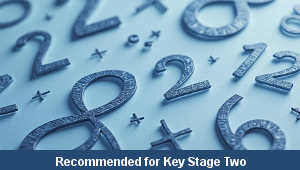Lesson One – Multiple Patterns

This maths teaching pack for Key Stage Two gets the children to investigate, describe and record some of the special patterns that can be created when using multiples of different numbers to one hundred.
The class can identify and name the matching rules that can be used to identify the next numbers when continuing each multiple pattern on a number square.
Download this teaching pack including a lesson plan, classroom activities and an interactive presentation to investigate, describe and record some of the special patterns that can be created when using multiples of different numbers to one hundred
Activities in this teaching pack include differentiated worksheets to identify and record multiples of different numbers to one hundred for core and extension ability levels and to fifty for support ability levels to match number rules that create a range of patterns on number squares.
The interactive presentation gets the children to explore some of the patterns that can be created when using multiples of different numbers to one hundred.
This lesson is part of a maths scheme of work to get the children to identify and record the factors of different numbers to one hundred which can be utilised when performing mental multiplication calculations. There are teaching activities for shared learning, differentiated worksheets to support independent learning and interactive presentations to introduce concepts and key skills.
-

Length Calculations
Practise using number calculations skills for addition, subtraction, division and multiplication when solving problems related to length measurements
-

Maths Calculations Assessment
Assess abilities in solving a range of different number problems for addition and subtraction when working with informal and formal written calculations
-

Determinant Lists
Explain and model how to make lists of objects used and found in different locations to match the correct determinants of a and an
-

English SPAG Assessment
Assess abilities in composing sentences for fiction and non-fiction using the correct spellings, punctuation marks and grammar vocabulary phrases
